If your coffee table is a focal point in your living room, show off your design flair and set the tone for your space with a well-styled surface. Use these rooms as inspiration to display your treasures and books to maximum effect.
What to Consider When Purchasing a Coffee Table
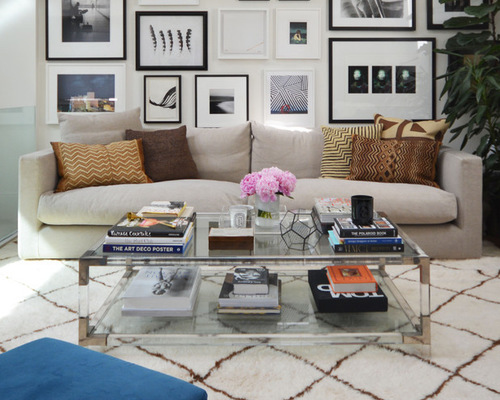
FLAT15, original photo on Houzz
Create a visual grid. By arranging objects in a grid formation, you’ll create a harmonious effect, especially if the display mirrors the seating. Break up the formality by placing a vase in a contrasting texture and height in the center.
It’s easy and practical to create a grid with books, as the homeowners have done here. However, to add more interest, a good tip is to choose objects in a variety of materials, such as wood, glass, fabric and stone.
Vary the heights. Choose objects of differing heights to create vertical interest and allow your eye to move up and down. Be wary of tall items, however, that may restrict your view of other people, the TV or the window and scene outdoors.
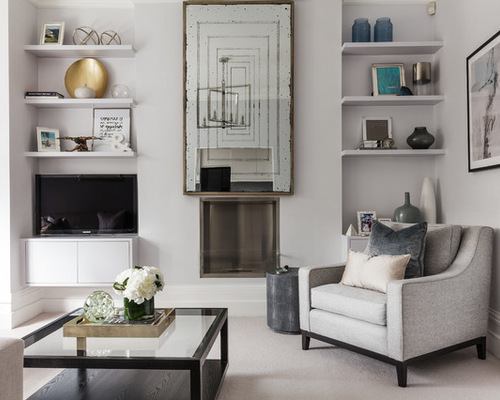
The White House Interiors, original photo on Houzz
Stick to a simple palette. This is a simple yet well-considered display. The flowers, glass orb and tray are fairly diverse in shape and style, but as they’re all in neutral shades, they’re a collection rather than a group of random objects.
Double up. Sometimes one coffee table can look a little lost, or be too far away to reach easily from a sofa or an armchair. Two tables are a neat solution.
These contemporary nested tables allow the homeowners to display their books and ornaments on one, while keeping the other relatively clear. The latter can then be moved around the room when it’s needed elsewhere.
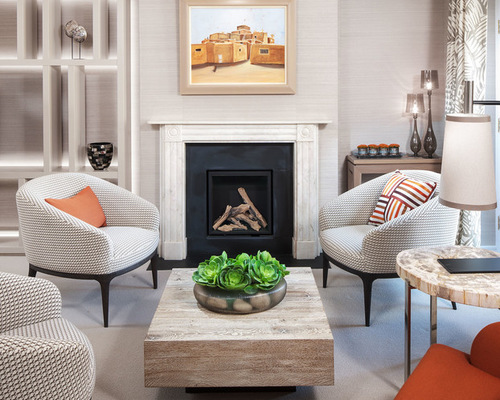
Neale Smith Photography, original photo on Houzz
Showcase a micro garden. This striking display of succulents in a large planter adds life, color and energy to the room, but there’s still space to rest a glass or book.
Succulents are a great choice, as they’re easy to look after and have a small root ball, so they don’t need a tall pot. By choosing plants of the same variety, you’ll create a calm and ordered display.
Bring a tray into play. Trays are the perfect way to create order on a table. By gathering disparate objects onto a small platter, you visually anchor them and create an attractive grouping.
Consider the finish of the tray and contrast it with the surface of the table.
Follow the rule of thirds. Odd numbers of matching items are a classic design rule. This works well on a coffee table, as pairs can sometimes be too symmetrical in a small arrangement.
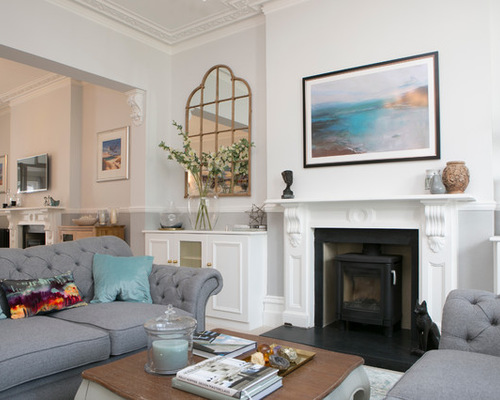
Coral Interiors, original photo on Houzz
Curate a collection. If you have a collection of small, pretty items, gather them in a dish. The brass platter in this room holds semiprecious stones and crystals, which would otherwise look lost or might end up falling off the table.
Another great way to display stones and crystals is in a glass box with a lid. Do be careful not to place highly faceted stones in direct sunlight, though, as they can be a fire risk.
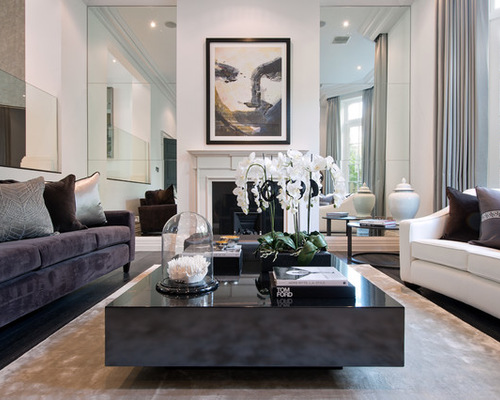
The L&C Company, original photo on Houzz
Choose a low table. In this monochromatic room, the coffee table sits lower than the seats, which allows slightly taller items to be displayed. The glass dome creates height without disrupting the sightline across the table.
Orchids are a high-impact indoor plant, offering color and gracefulness, and are a great alternative to cut flowers.
Style on the diagonal. Coffee tables are often viewed from all sides, so by using diagonal symmetry, you can create a balanced effect.
This idea works particularly well with a square table, or where the seating is arranged on two or more sides of the coffee table. When the candles are lit, the light will be evenly distributed for a cozy and stylish effect.
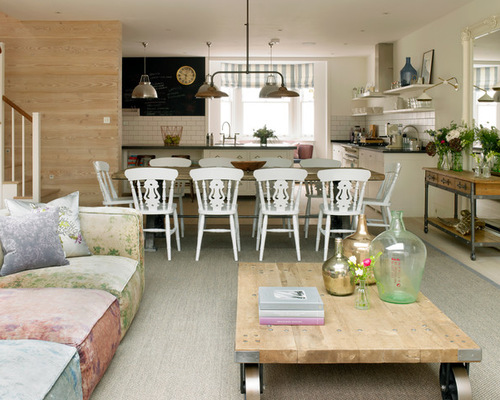
Stephen Fletcher Architects, original photo on Houzz
Repeat shapes. These vases aren’t a matching set, but the similar shape creates a collection. The mixed colors and finishes create a stylish but informal display. A pile of books balances the arrangement visually.
You could create the look with other similar but not matching objects, such as candlesticks, wooden boxes or cut flowers.

